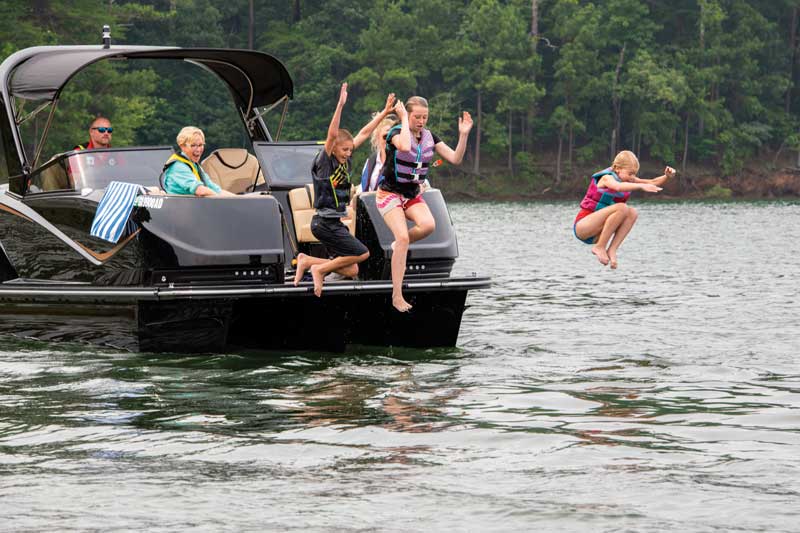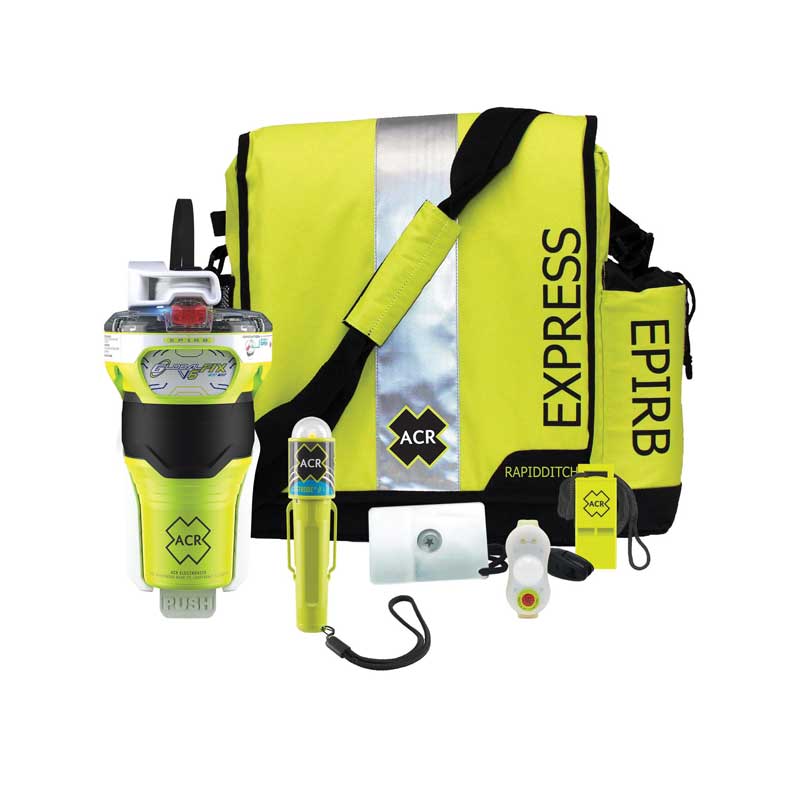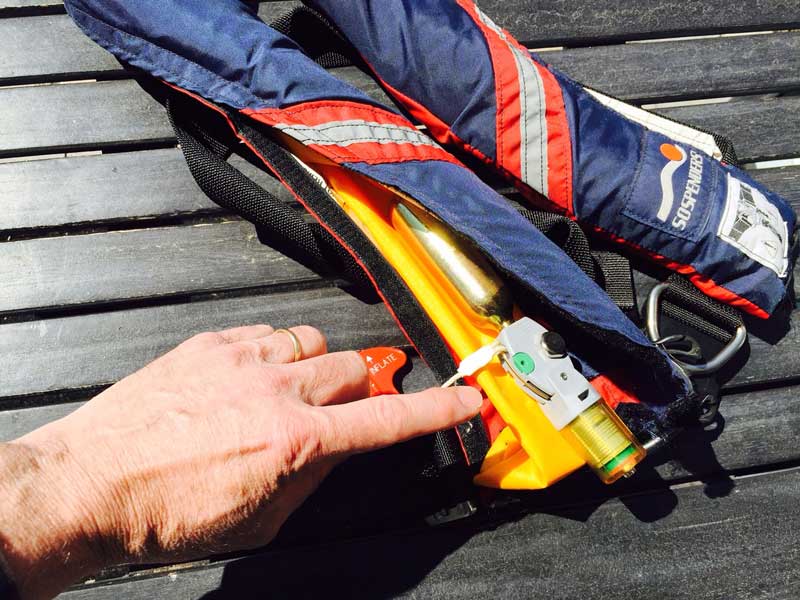With the boating season right around the corner, now is a good time to consider your boating safety gear. Advances in technology have resulted in smaller and more affordable devices, bringing top-notch safety equipment within the reaches of the coastal cruiser and even most Bay cruisers. Among the many aspects of safety, we’ve chosen these six soundbites to get your safety wheels turning in advance of the spring splash. See below for more safety resources.

Boating Safety Gear:
EPIRB
Emergency Position Indicating Radio Beacons, known as EPIRBs, are designed to send a satellite signal to rescue responders with your GPS location. This can be a game changer for boats that are out of VHF or cell range. Depending on the individual unit, EPIRBs will activate either manually or with water immersion. Such devices generally have about 48 hours of transmission power. Category One EPIRBs mount outside the vessel and are activated by water with a hydrostatic release of the cover. Category Two devices mount inside the vessel and require manual activation. It’s extremely important to register your EPIRB (free at noaa.gov) to link your device with your vessel information.
AIS
Automatic Identification System, AIS for short, allows vessel operators to receive and display on a chartplotter or GPS screen the position, course, speed, and other data of nearby vessels. With transponder technology, the device will also broadcast its own vessel’s data for others to see. Transmission capability is limited approximately to line of sight (about five miles), but this technology can make a world of difference in a crowded waterway and at night. Imagine how helpful AIS would be when you’re keeping watch for shipping traffic on the Bay after dark.

PLB
A Personal Locater Beacon, called a PLB, is made for individual use. Like an EPIRB, it sends a signal directly to rescue agencies. Key differences from an EPIRB are that PLBs require manual activation and transmit for approximately 24 hours, about half the time of an EPIRB. A PLB can be attached to a lifejacket. A separate floatation pouch also may be purchased. The integration of AIS with PLB offers boaters the best of both worlds. If a boater goes overboard while wearing a PLB with AIS integration, a satellite signal will be transmitted to rescue agencies (via PLB) and a signal will notify nearby boats (via the AIS). Be sure to register your PLB for free at noaa.gov.
Grab Bag
The grab bag, or ditch bag as it is sometimes known, carries the essential items you’ll need in the extreme situation that you must leave your vessel. Choose a bag that is buoyant, water resistant, has exterior reflective strips, and has pockets for organization. Items you will want to pack include the following: batteries and/or solar charger; electronic visual distress signal; EBIRB with GPS, AIS; first aid kit; flares; flashlight; high energy food; PLB with AIS; SAT phone; handheld, waterproof VHF, water and/ or water maker/purifier.
Lifejackets
There are many types of lifejackets, also called personal floatation devices (PFDs). They range from simple floatation vests that work for most recreational family boating to offshore versions for extended survival in rough, open water. Some varieties are designed specifically for watersports or paddling. As with other sporting gear, the more high-tech bells and whistles the pricier, but for more adventurous boating, the added features may be well worth the cost. To enhance safety, small, personal AIS devices can be attached to lifejackets to transmit a MOB signal.
Inflatable PFDs rely on chambers that inflate upon total immersion in water. They are popular for many reasons. They tend to be less bulky than vest-style lifejackets and are therefore cooler and more comfortable. Regardless of what style you choose, a proper fit is imperative for optimal performance. Find an easy-to-read infographic on properly fitting a lifejacket at
boatus.org/life-jackets/infographic.

Float Plan
Even experienced boaters sometimes wonder, “what exactly is a float plan?” Filing such a plan can be as simple as telling a responsible person where you will be going and when you’ll be back. This might be a text, phone message, or note. It’s best to state your intended destination, planned route, and expected timing. Adding a description of your vessel and the number of people onboard is even better. Even leaving a note under your vehicle’s windshield wiper at the launch ramp can help trigger an alarm if you don’t return in a timely manner. If you’d like a pre-made form to fill out, a very thorough fill-in-the-blank float plan can be found at floatplancentral.cgaux.org.
Important Safety Equipment:
- Anchor with line/chain
- Bailer
- Charts/maps/chartplotter
- Fire extinguisher(s)
- First aid kit
- Flashlight
- Knife
- Navigation lights
- Oar/paddle
- PFD for each person onboard
- Sound-making device
- Throwable floatation device
- VHF radio
- Visual distress signals
More resources:
- BoatUS Foundation
- National Safe Boating Council
- The U.S. Coast Guard's Boating Safety Division
- US Power Squadrons (America’s Boating Club)